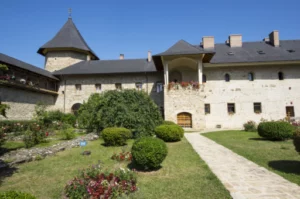San Antonio’s Historical Legacy Sung by Vintage Music Boxes
San Antonio — Nestled in a vintage Italianate mansion in the heart of San Antonio, lies a collection of historic relics that are more than just visual masterpieces. These are antique music boxes that reveal chapters of San Antonio’s rich history in the most melodious manner. Behind the walls of the Villa Finale in the Historic King William neighborhood, these music marvels come to life, painting auditory images of the past.
The Unusual Music Machines of Villa Finale
In an opulent 1876 mansion, you’ll find an unusual machine the size of a closet – a contraption known as the “Deluxe Model Violano Virtuoso”. With the flip of a switch, it springs to life, playing tunes reminiscent of the 1920s. Its dual violin setup and built-in piano board are antiquated music engineering wonders.
This enormous music box once piped tunes in the infamous Albert Friedrich’s Buckhorn Saloon in the heart of the city. But with the advent of Prohibition and the consequential closure of the saloon, it found a new home with the Koehler family of the Pearl Brewery. Eventually, it was gifted to Walter Nold Mathis, the preservationist behind Villa Finale.
The Stories It Tells
Dissecting the journey of this antique music box uncovers the story of a vibrant, evolving city and its colorful, often racy past. Billy Keilman, a rival to the Buckhorn Saloon and an infamous figure in the city’s history, has an indirect connection to the music box. After a life-changing experience, Keilman left the saloon business and moved into Villa Finale with his notorious madam wife. Under Keilman’s ownership, Villa Finale served as both a brothel and a speakeasy during the Prohibition era.
More Than Just Music Boxes
Villa Finale’s collection extends beyond this musical phenomenon. Occupying the main parlor is a 1921 Bechstein reproducing piano that plays music with no human intervention, amazed passers-by attributing the melodious sounds to Mathis himself. Upstairs hides another treasure, a Victorian Swiss music box playing Scottish songs with a set of Chinese Bells, attended by two animate dolls, a captivating mechanical ballet.
Further exploration into Mathis’s bedroom unveils another music box, this one notable not for its girth but for its personal significance. It belonged to the Mathis family, bringing to light yet another chapter of San Antonio’s history. Mathis’s ancestral relation to John Smith, the last messenger to leave the Alamo, intertwines personal and public history, making the music box more valuable by virtue of association.
These music boxes, their intricate mechanisms, the melodies they play, the dolls that enact shows, all stand as a testament to San Antonio’s history. Each piece, each note, each movement seems to sing the city’s past in a way no written word or spoken tale could capture, making Villa Finale a vital part of San Antonio’s vibrant cultural and historical tapestry.








